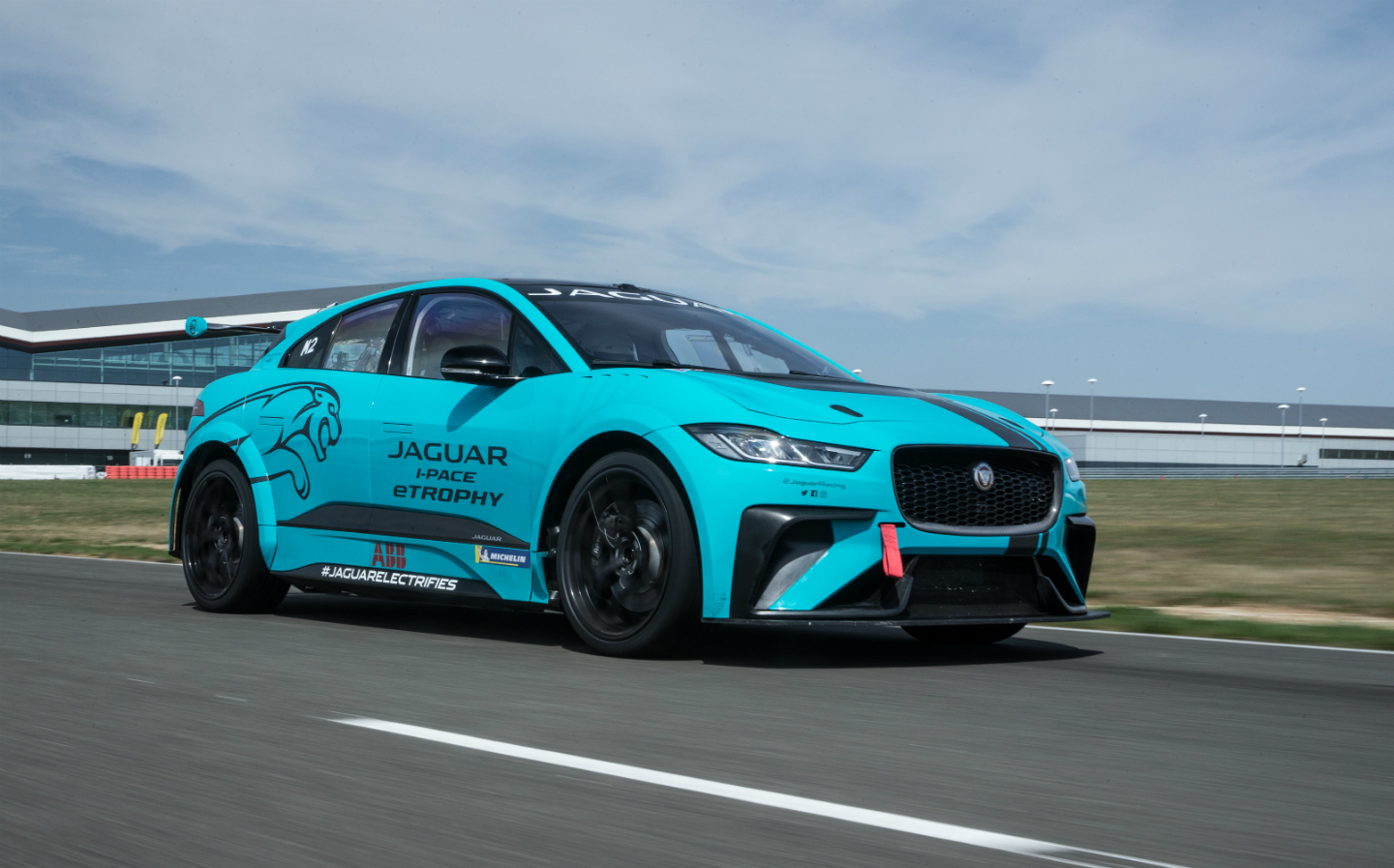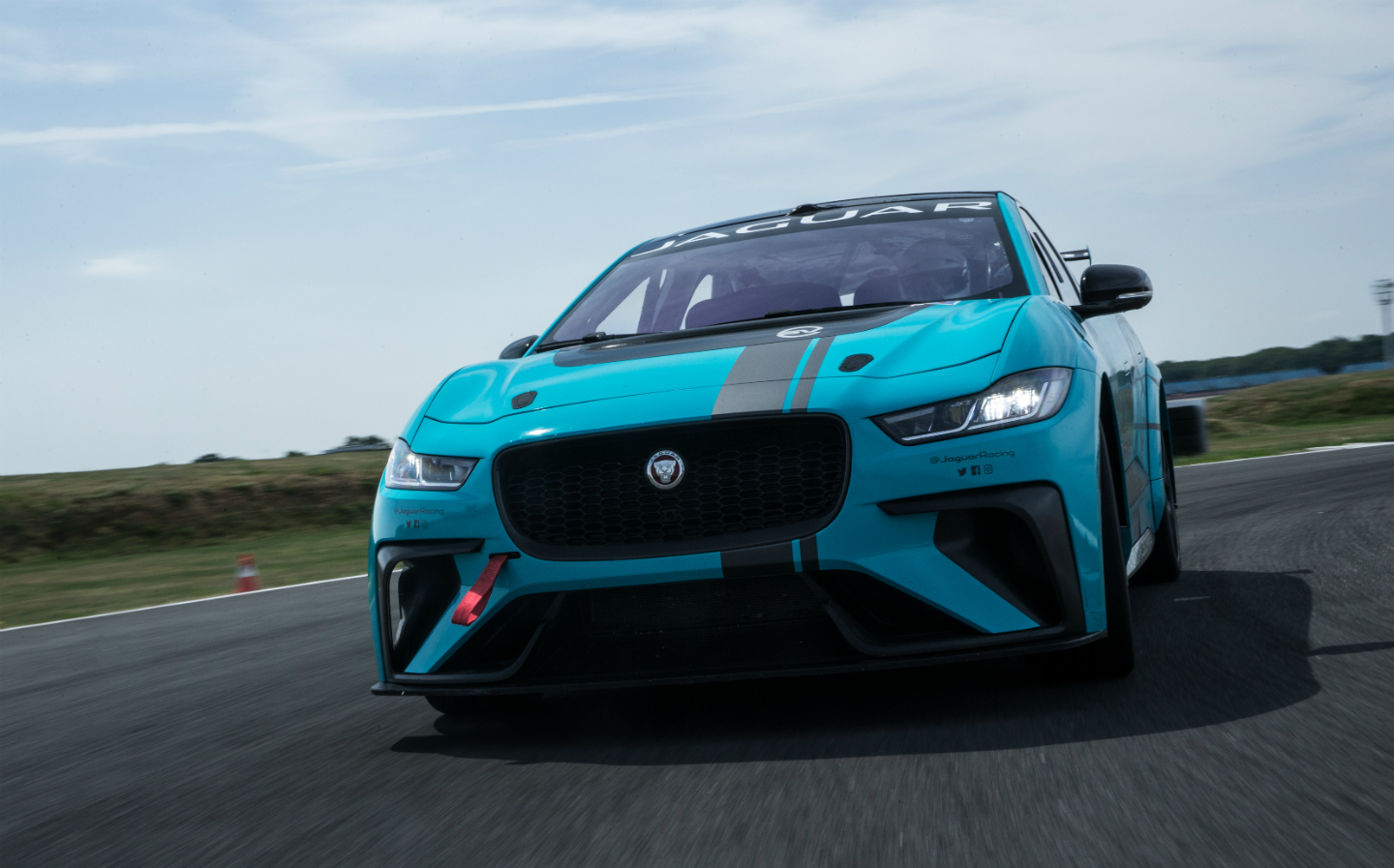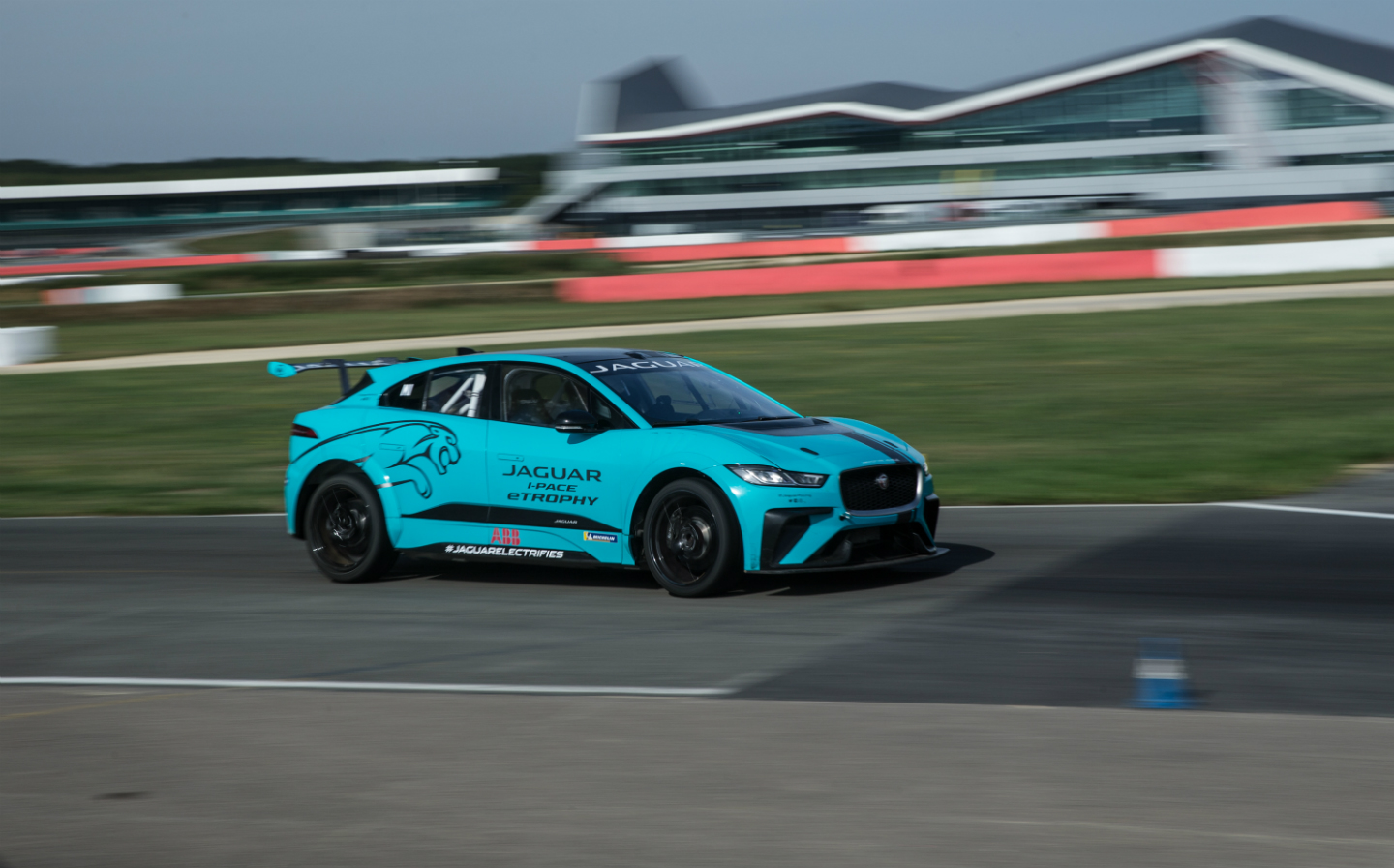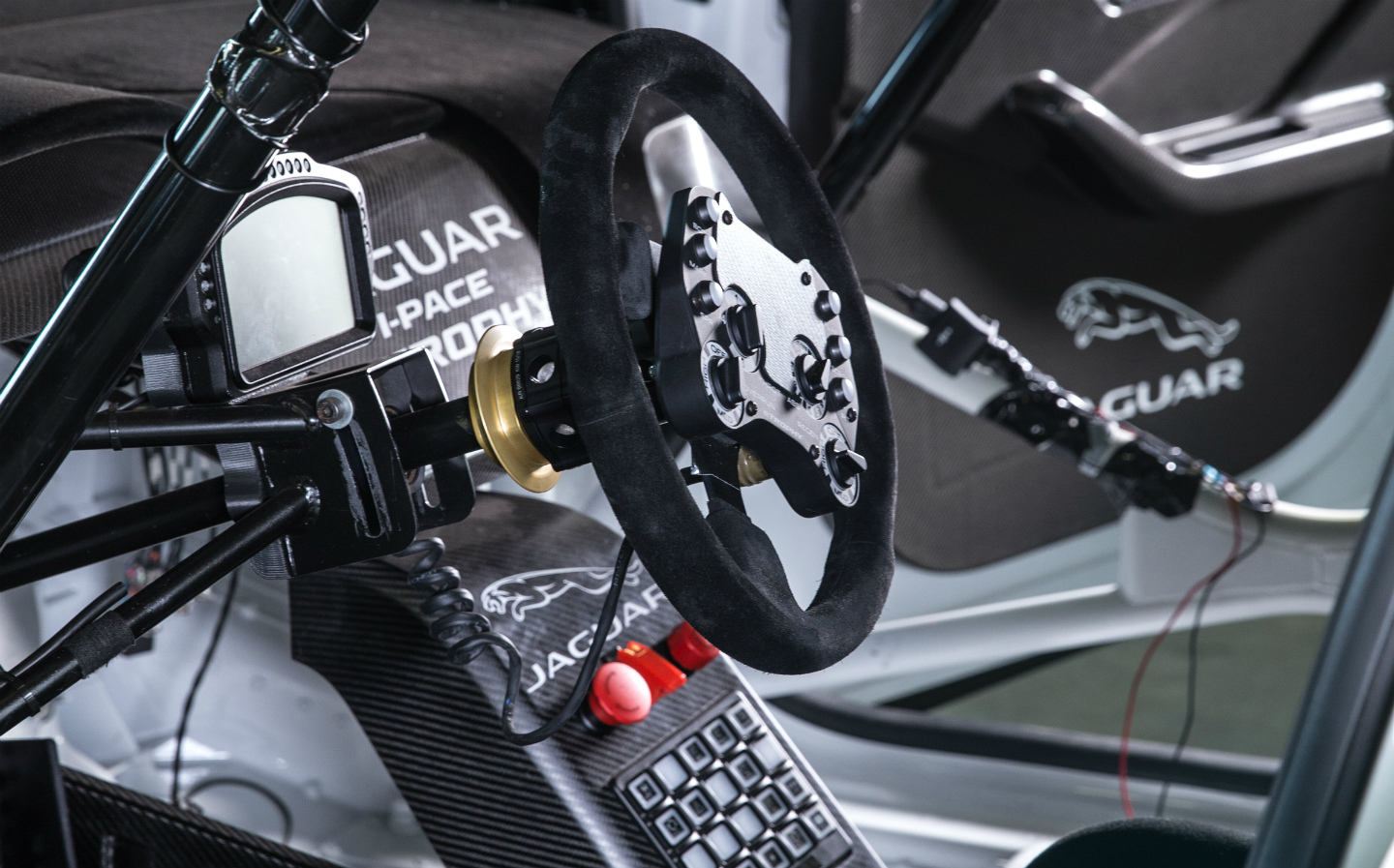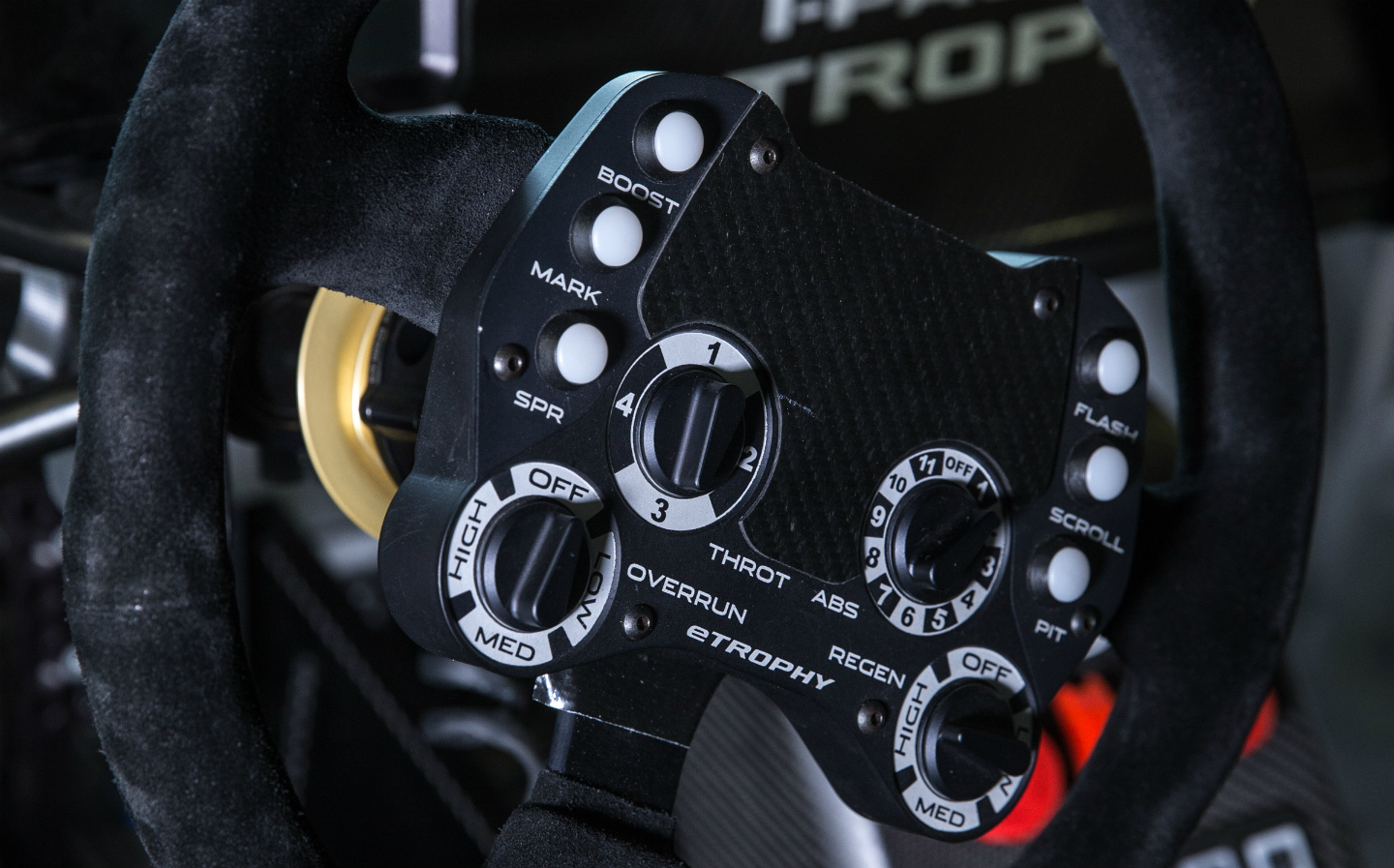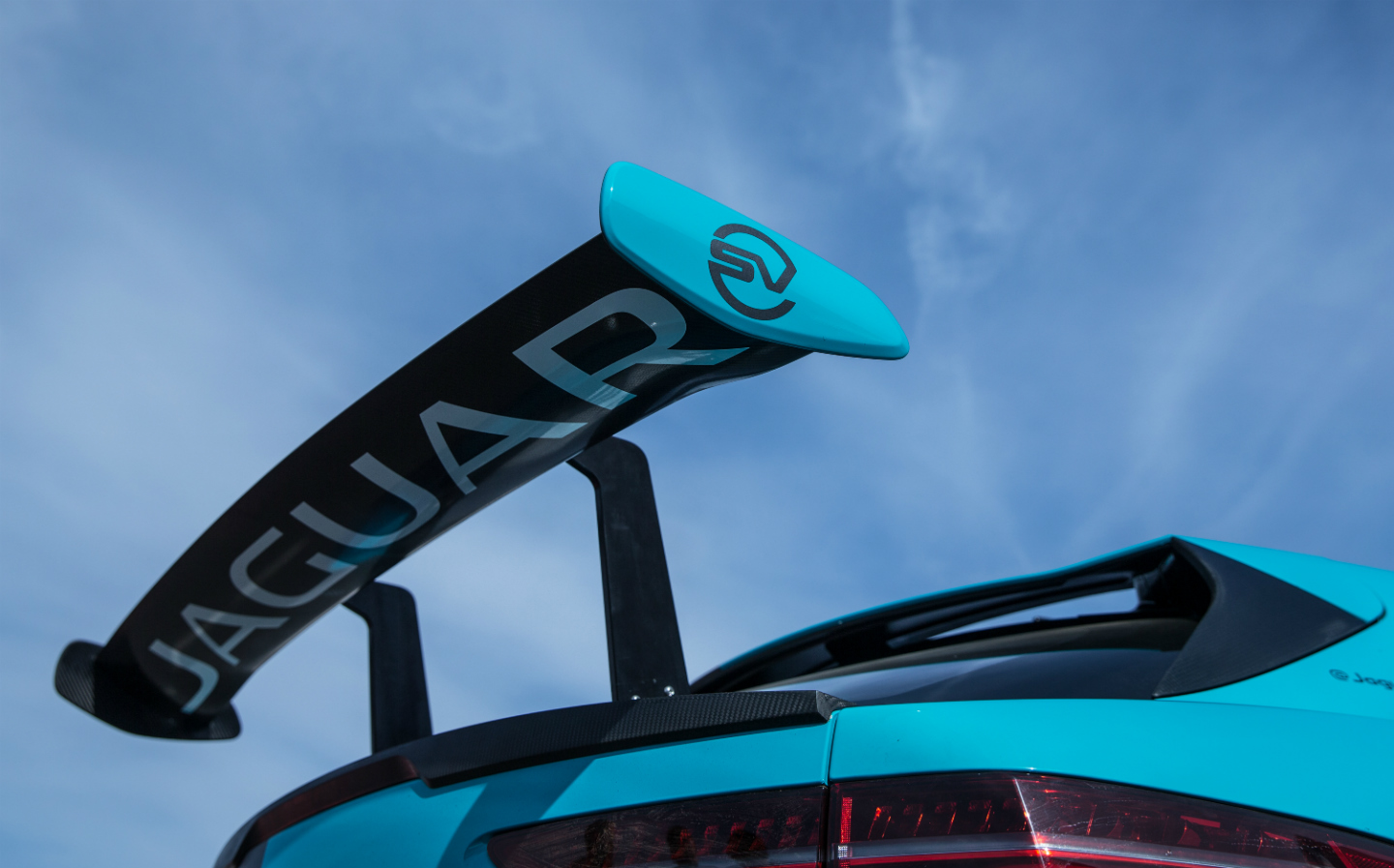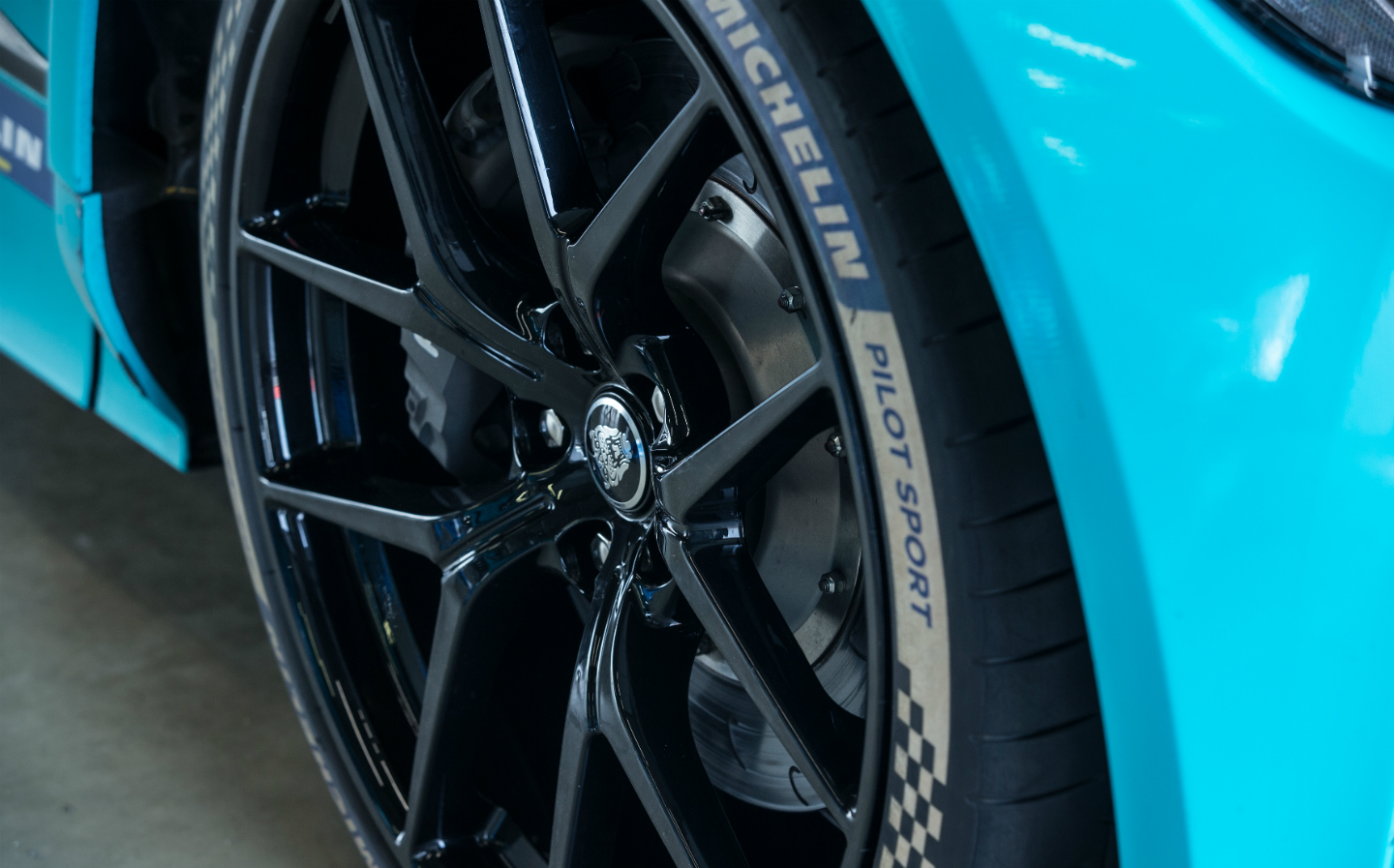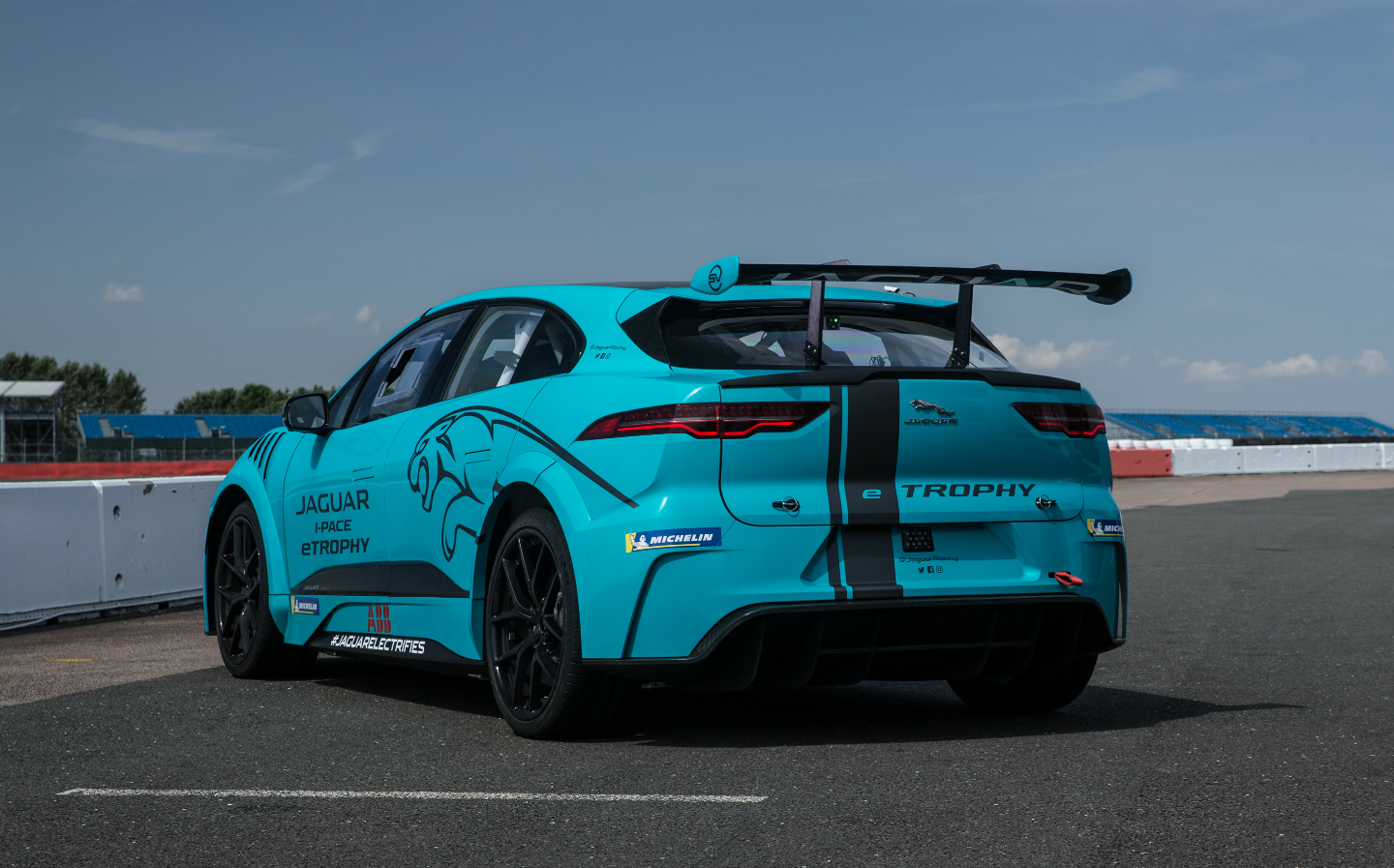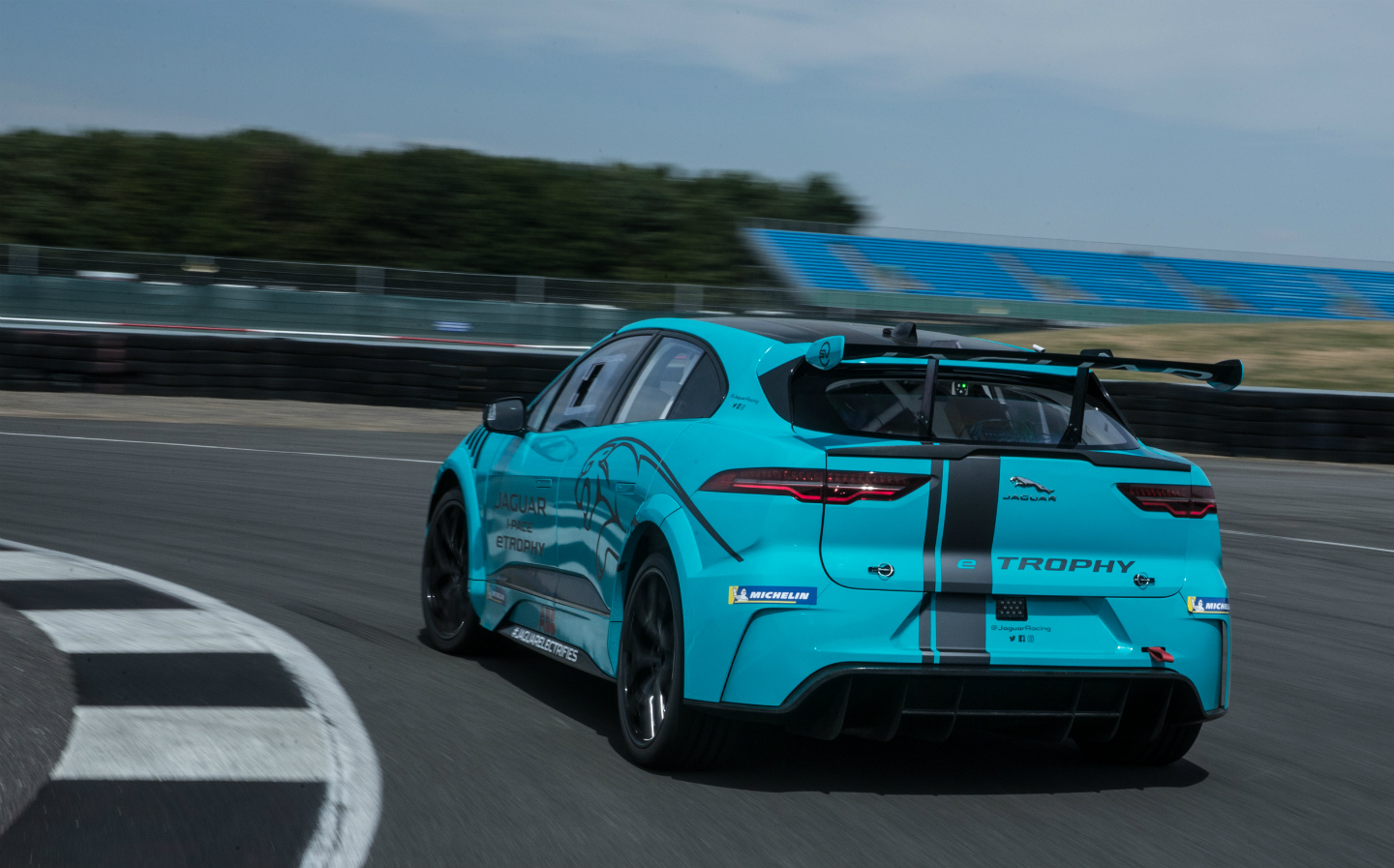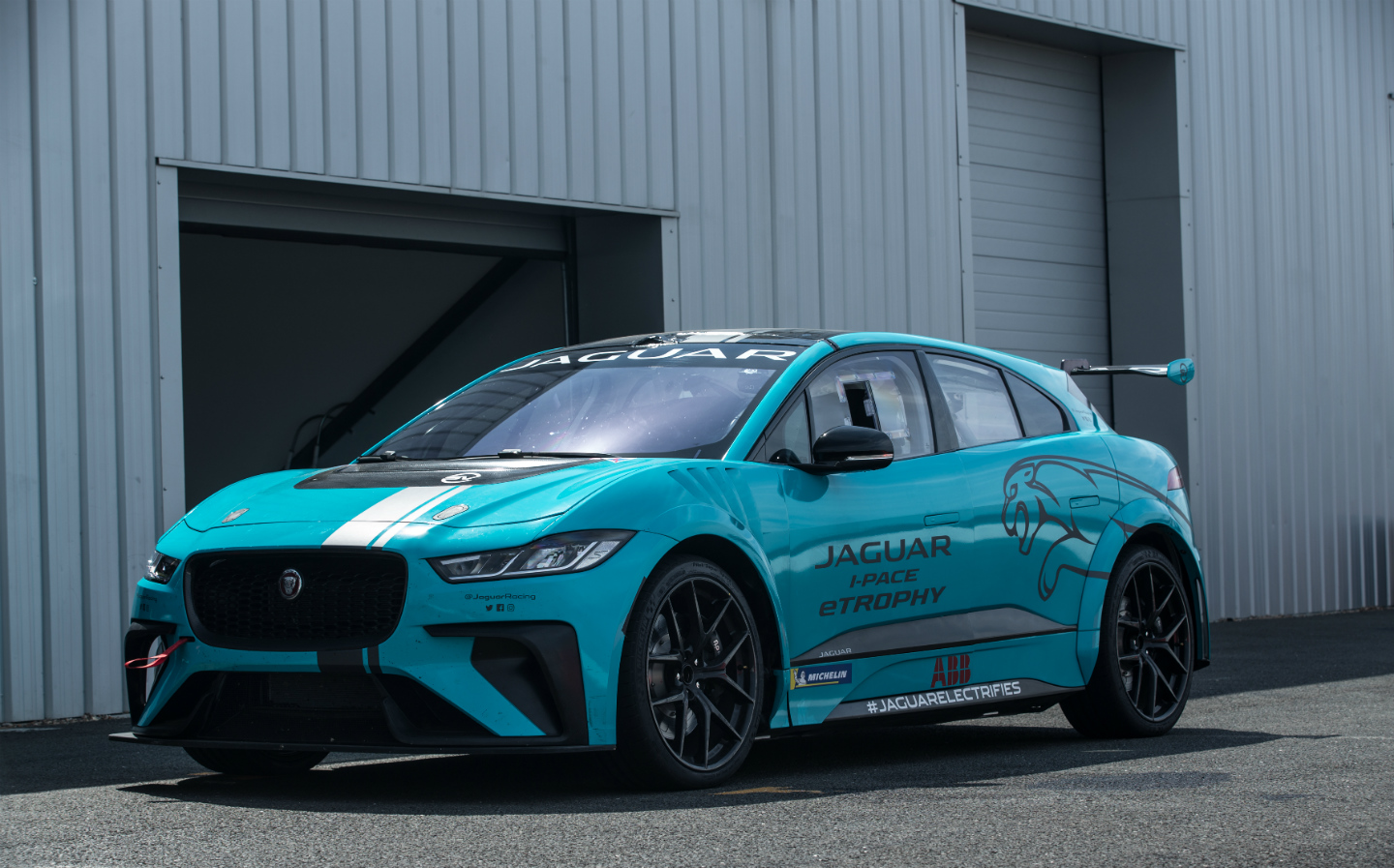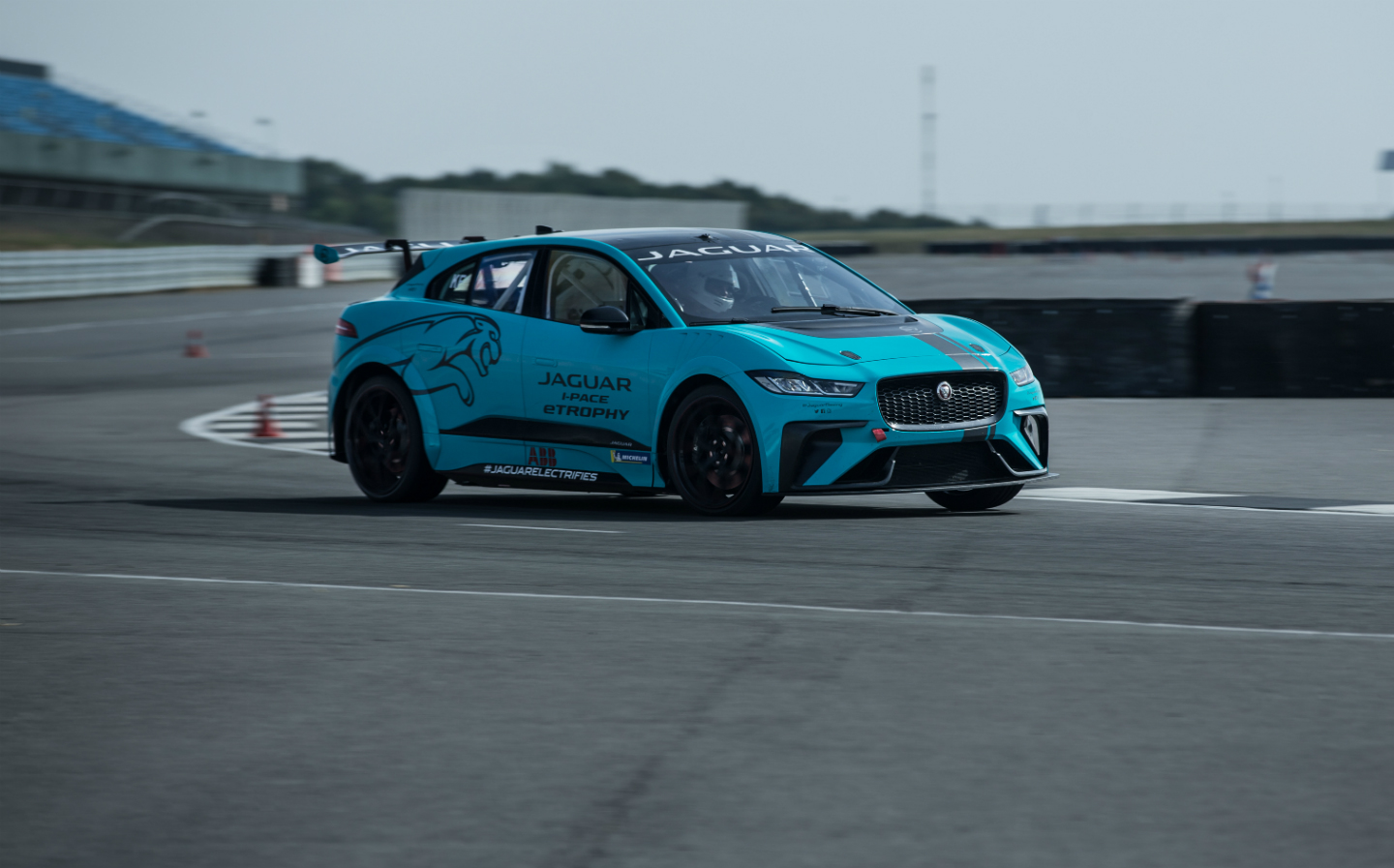Behind the wheel of the Jaguar I-Pace eTrophy electric racing car
Flat-out in silence at Silverstone
ARRIVING AT a sun-baked Silverstone circuit, the roar of high-revving engines and smell of burnt petrol fills the air. GTE sports cars are screaming around Britain’s Grand Prix race track, their drivers perfecting their lines and fine-tuning their Aston Martins, BMWs, Ferraris and Fords, ahead of a round of the FIA World Endurance Championship.
Flames shoot from the exhausts with every gearchange. Even on a working weekday, the sight and sound of these cars is enough to draw a small gathering of spectators, eager to capture a close-up view of these monsters of speed.
Unbeknown to them, on Silverstone’s infield, another car is being put through its paces. Its driver is charging hard, drifting the car through the twists and turns of Stowe circuit and using every inch of the track width, kicking up dust as the outer wheels occasionally edge onto the grass.
And here it comes, approaching the straight. Instinctively I reach to put my fingers to my ears, then check myself: there isn’t any sound.
Instead, there’s just the noise of air rushing around the car’s bodywork, followed by a slight shockwave that breezes by your face.
When it returns to the pit lane, the car’s fan whirs away at speed, trying to cool the engine. Except, there is no engine. The noise is coming from the car’s thermal management system, which has kicked-in to maintain a safe temperature for the battery and pair of electric motors that power this electric racing car.
For Jaguar, this time at Silverstone is one of the last, valuable test sessions that is being used to fine-tune its new I-Pace eTrophy race car.
Based closely on the road car that went on sale in March to Britain’s drivers, the I-Pace eTrophy is the world’s first one-make championship for electric road cars.
Why is a comparatively small car maker investing so much in what might appear to some to be a niche within motorsport? Most likely, executives sense that with the rise of the electric car, there is an opportunity for Jaguar to take a lead in a part of the car market that will boom.
Last year, 3 million battery powered vehicles were on the road. By 2030, the International Energy Agency predicts there will be 125 million.
It’s why the British car maker entered the FIA Formula E Championship before its competitors. Why it pushed to bring the I-Pace to market, ahead of new electric cars from Audi, BMW and Mercedes. And it’s why it’s going racing with the I-Pace.
It will be the support race to the glamorous Formula E championship, joining the tour of 10 of the championship’s 12 cities, which include New York, Paris, Hong Kong and Rome. The first round will be held at Riyadh, in December.
This first-off-the blocks strategy is Jaguar’s way of saying it builds the world’s best electric cars. “We’ve always said we want to prove our electrification technologies on the track – this is the proof,” says Gerd Mauser, Chairman of Jaguar Racing. “Ultimately this innovative series will enhance the technology in our future electric vehicles and benefit our customers.”
For aspiring professional racing drivers, electric cars present a clear opportunity. Car manufacturers and sponsors are queuing up to align themselves with the shift to electric cars – the World Rally Championship will be electric from 2020 – so competing in an electric car series, like the I-Pace eTrophy, could be a smart move.
Racing in an international series like this won’t be cheap, however. The car costs £200,000, and Jaguar charges a further £450,000 to run it in the championship for drivers, as part of what’s known as an ‘arrive and drive’ package.
Jaguar even includes a driver’s race kit, so all a competitor has to do is pack a passport, jump on a plane to one of the capital city destinations, and everything will be ready for them.
The cars have been designed by Jaguar Racing and the way they drive has been set-up by the company’s SVO division – Special Vehicle Operation – which is also responsible for Jaguar’s high-performance road cars.
Who might be racing? Marion Barnaby is the person to ask. As manager of the championship, her track record includes nurturing the Porsche Carrera Cup from an idea to one of the UK’s fastest and most successful one-make race series. “Katherine Legge is the only driver we can confirm so far. But we are getting enquiries from drivers of GTs, Indycar, Formula 2 – drivers with licences from Platinum to International C.”
One race engineer and two mechanics will be allocated to every two cars. Drivers can adjust the front and rear anti-roll bars, the compression and rebound of the dampers, alter the braking bias from the cockpit and change the level of assistance of the anti-lock system. There’s also one of four torque maps for the motors, selected on the steering wheel.
But what’s an electric racing car like to drive? Jaguar Racing allowed Driving to be one of only two people outside of the organisation to put it through its paces on a race track.
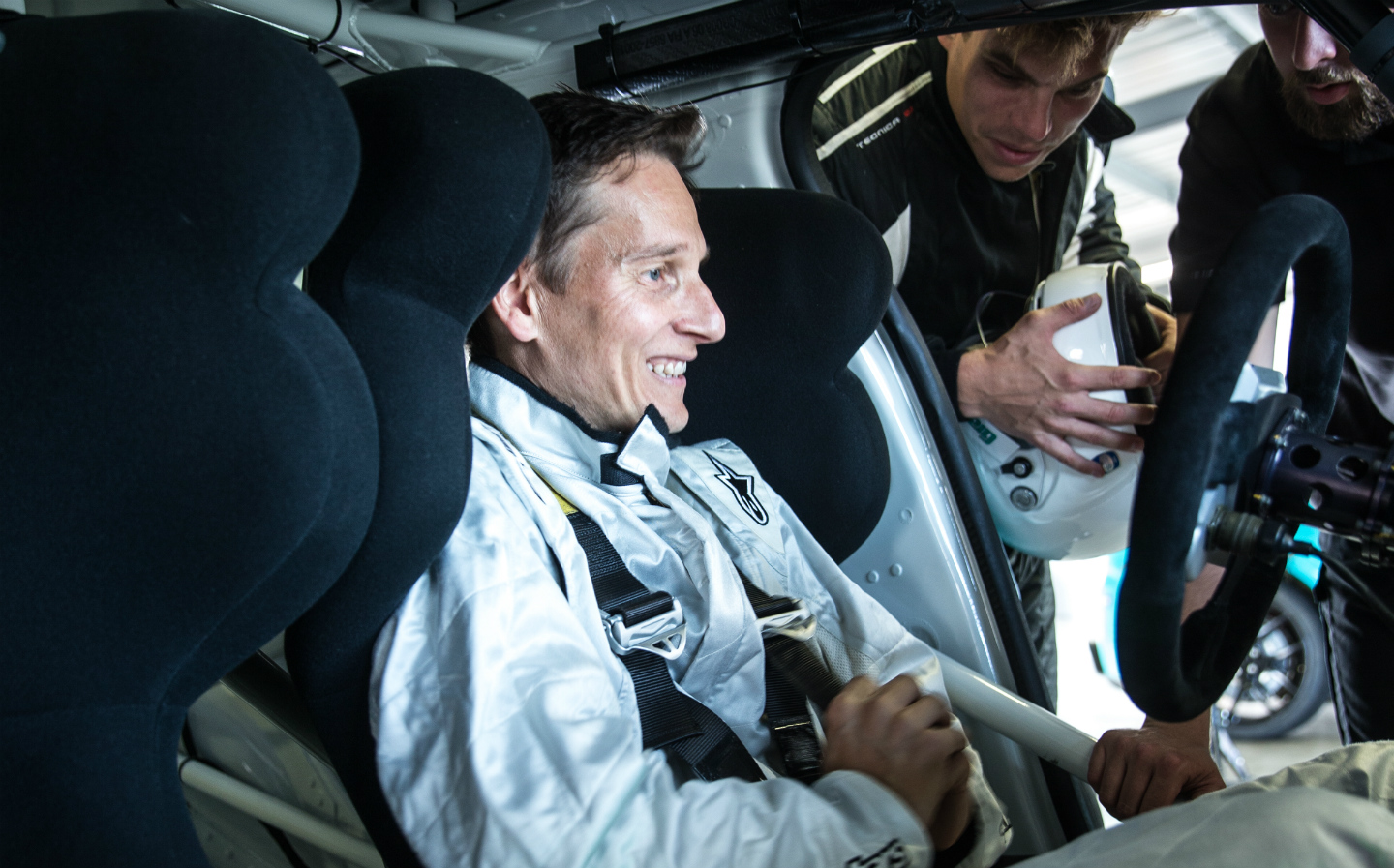
Like any touring car-type racing machine, the seat is set a long way back in the I-Pace, between the axle lines, you’re perched on the floor, unable to see much ahead of you, and a bank of switchgear to your right (it’s left-hand drive).
Flick the isolator switch, press the Start button and, er, a few lights blink into life. It’s peculiar to be greeted by silence when starting a racing car.
Then you select Drive and all that’s left to do is manage two pedals – the brake and accelerator. That’s another odd thing about an electric racing car; with a single-speed transmission, there’s no gearlever or set of paddles to pull at.
Colin Ramsden, the engineer leading development of the I-Pace eTrophy car, says with a composite and carbon fibre bodywork clothing the aluminium chassis, a lot of work has gone into taking out as much weight as possible, lowering it from 2133kg to 1995kg. “It’s not a light race car, but the driver feedback is very good and importantly it doesn’t feel its weight,” says Ramsden.
As for the electric powertrain – the 90kWh, 600kg battery pack, and two electric motors – the hardware is the same as the road car’s (which makes 395hp and 513Ib ft of torque) but Ramsden mischievously adds “we have tweaked the software”
The acceleration is initially brisk rather than brutal – Jaguar Racing says 0-62mph takes 4.5 seconds. And because of the flat torque curve, it remains constant, rather than building to a crescendo, as it would in a petrol-powered race car.
Competitors are likely to find themselves dicing in nose-to-tail, door-against-door racing most of the way
The AP Racing brakes offer stupendous slowing power, and still retain regenerative braking capacity. And the handling is surprisingly agile, helped in no small part by the bulk of the car’s weight – the battery – being beneath the floor. There’s also more feedback than expected; the steering, brakes and seat-of-your-pants let you know when any corner of the car begins to lose grip.
Even with the championship’s Michelin Pilot Sport 4 tyres, which are (22-inch) road-legal tyres, the levels of grip are good. There’s also a level of adjustability to the car’s handling but it never gives the impression it will bite – this is an idiot-proof race car. Even when turning into some of the faster bends while braking, something that could cause more sensitive racing cars to spin off into the sand trap, it the I-Pace eTrophy does nothing more than shuffle around.
It’s odd to be able to hear the brakes so clearly and listen to the constant chirping of the tyres as the car hovers between gripping the road surface and sliding, but that’s what happens when there’s no howling engine to drown out everything else.
With 20 cars in each 30-minute race, competitors who come to the championship are likely to find themselves dicing in nose-to-tail racing most of the way. It should lend itself the sort of door-rubbing driving some motorsport fans will recognise from series like the British Touring Car Championship.
But there’s a problem. The cars’ batteries need to be charged. And following the cables supplying electricity to the charging stations, used at the Silverstone test session, leads back to biodiesel-powered generators.
It’s a flaw that symbolises the wider problem with any wholesale change to electric cars: they’re only clean when their energy comes from renewable sources.
To make electric car racing truly clean and green, circuit owners, car manufacturers, championship organisers, energy suppliers and sponsors need to tackle the biggest issue of all, infrastructure, such as solar solutions and energy storage of the sort developed by Tesla and Panasonic.
Jaguar Racing says at some events, it hopes to use the same generators as the Formula E championship, specially adapted to burn glycerine, a waste byproduct of biodiesel that has low levels of carbon, NOx and particulate emissions.
Electric car racing series like the I-Pace eTrophy may well prove to be exciting for everyone that lines the capitals’ streets to watch drivers go wheel to wheel. And to the public it may seem clean and green. But behind the scenes the eco-credentials could still benefit from some of the fine-tuning that’s gone into the cars.
Tweet to @squarejames Follow @squarejames


